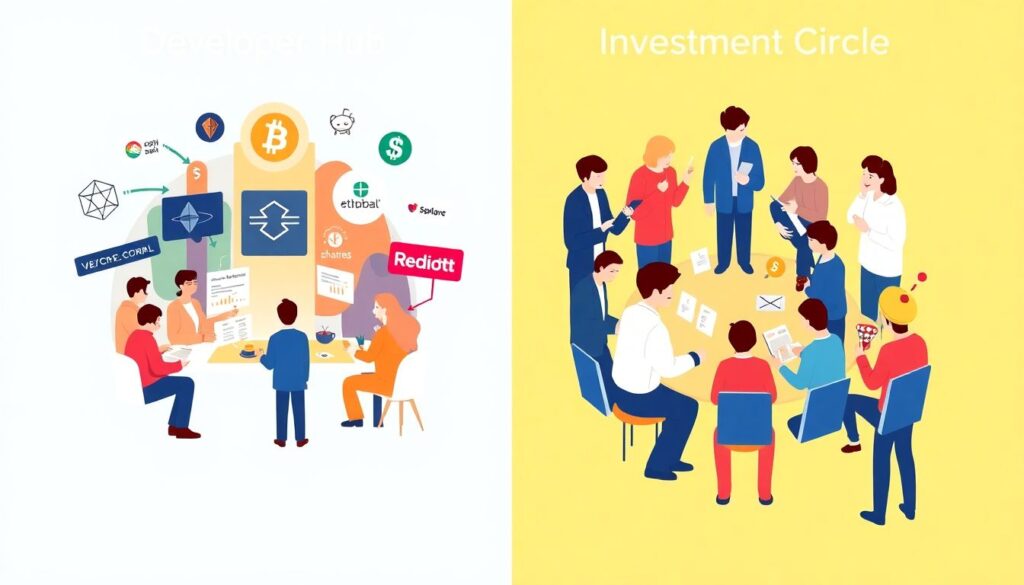Understanding Crypto Education Ecosystems
Cryptocurrency is more than just decentralized digital money — it is also a rapidly evolving technological space that demands continuous education. Crypto education ecosystems are platforms, frameworks, and communities that help users, developers, and investors build knowledge and apply it in real-world situations. These ecosystems are essential for onboarding new users, reducing risks, and empowering individuals to actively participate in blockchain innovation.
Essential Tools for Crypto Learning

Before diving into the educational process, it’s important to equip yourself with the right tools. These tools serve as your digital workspace and support system for understanding, practicing, and interacting with cryptocurrencies.
1. Wallets – To practice using cryptocurrency, you’ll need a wallet. Start with beginner-friendly wallets like MetaMask, Trust Wallet, or Coinbase Wallet.
2. Blockchain Explorers – Tools like Etherscan or Blockchain.com allow users to verify transactions and study how blockchains operate.
3. Learning Platforms – Websites such as Coursera (offering blockchain courses), LearnWeb3, and Chainshot provide structured curricula for both beginners and developers.
4. Sandbox Networks – Testnets like Ethereum’s Sepolia or Avalanche Fuji let you experiment with smart contracts without using real assets.
5. Communication Platforms – Discord, Telegram, and Twitter are the epicenters of crypto discussions, updates, and collaborative learning.
With these tools, you’re set to engage with the crypto ecosystem not just passively, but actively.
Step-by-Step Guide to Engaging in Crypto Education
Navigating the crypto education landscape can be overwhelming. Breaking it down into manageable phases will help streamline your journey.
- Orientation – Begin with foundational knowledge: what is blockchain, how does cryptocurrency work, and why decentralization matters. Platforms like Binance Academy and the Bitcoin Whitepaper are solid starting points.
- Concept Application – Move from theory to practice. Create a wallet, receive testnet tokens, and perform simulated transactions. This demystifies blockchain mechanics and builds confidence.
- Community Integration – Join Discord servers of projects that interest you. Participate in AMA sessions, reading groups, or DAO onboarding calls. This is where learning becomes collaborative and contextual.
- Smart Contract Interaction – Learn Solidity or Rust through interactive platforms. Deploy contracts on testnets and explore how decentralized applications (dApps) function under the hood.
- Earn and Contribute – Crypto education often leads to earn-to-learn programs like Coinbase Earn or Layer3 quests. Many communities offer bounties, grants, and internships that incentivize learning through contribution.
This process not only educates but prepares users to interact securely and meaningfully with crypto products.
Exploring the Role of Communities in Crypto Education
One of crypto’s strongest value propositions is community-driven growth. Education in this space is driven less by institutions and more by collectives.
Types of Crypto Communities

Crypto communities vary in focus and structure. Some notable types include:
– Developer Hubs – Examples include ETHGlobal, Web3 Foundation, and Solana Devs. These focus on tooling, protocol design, and open-source collaboration.
– Investment Circles – Groups like r/CryptoCurrency or Twitter spaces where users discuss markets and evaluate token fundamentals.
– DAOs (Decentralized Autonomous Organizations) – These are communities that govern projects and protocols collectively. DeveloperDAO and BanklessDAO are two educational DAOs that also function as experience platforms.
These communities often include mentoring, job boards, collaborative projects, and hackathons, which transform passive learners into active contributors.
Common Pitfalls and How to Troubleshoot Them
As you immerse yourself in the crypto education ecosystem, you may encounter stumbling blocks. Knowing how to identify and address them is crucial.
Problem 1: Information Overload

The decentralized nature of crypto means there’s no single source of truth. To avoid burnout:
– Focus on one protocol or project at a time.
– Use curated content aggregators like Messari or Decrypt.
– Schedule daily or weekly learning sessions to pace your exploration.
Problem 2: Scams and Misinformation
Because of its pseudonymous environment, crypto is a target-rich space for fraud.
– Always verify sources: follow contributors with respected reputations.
– Never share your private keys.
– Prioritize learning from open-source or audit-backed platforms.
Problem 3: Technical Complexity
Smart contracts, decentralized finance (DeFi), and zero-knowledge proofs can be daunting at first glance.
– Join beginner-focused groups like CryptoZombies or The Graph Academy.
– Break down concepts through analogies and hands-on experimentation.
– Ask questions—no matter how simple—within trusted communities.
Conclusion: Learning Crypto by Doing
Crypto education ecosystems thrive on participation. Unlike traditional learning environments, engagement in blockchain communities rewards curiosity, collaboration, and experimentation. Understanding wallets, exploring testnets, contributing to DAOs, and interacting in open-source spaces are not just educational steps—they are pathways to real-world impact.
The key to mastering crypto is not memorizing jargon, but learning how to use tools, apply knowledge, and navigate the community that is building the decentralized future.

